Ah, lamb rack. Just the mention of those perfectly arranged chops, each with a delicate layer of fat glistening in the light, evokes a sense of luxury and culinary delight. It's a dish that instantly elevates any dinner party, a crowd-pleaser that leaves everyone wanting more. But achieving that perfect balance of tender, juicy, and flavourful lamb rack requires a bit of knowledge and, dare I say, a touch of artistry.
Over the years, I've had my fair share of lamb rack adventures, from those that left me feeling a bit underwhelmed to those that were sheer culinary ecstasy. And through those experiences, I've learned a thing or two about how to make this dish truly sing. So, grab a glass of something delicious, settle in, and let's embark on a journey to uncover the secrets of achieving lamb rack perfection.
(Part 1) Choosing the Right Rack: The Foundation of Flavour
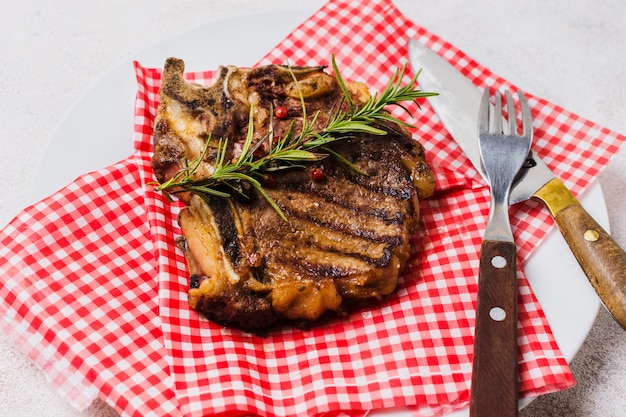
Before we even think about turning on the oven, we need to start with a fantastic foundation. Choosing the right lamb rack is like choosing the perfect canvas for a masterpiece – it sets the stage for everything to come.
The Cut: Frenched vs. English
You'll usually encounter two main types of lamb racks in your butcher's display: Frenched and English (or American). A Frenched rack, with its exposed bones trimmed and often even roasted to add extra flavour, is a visual feast. It's elegant, dramatic, and oh-so-Instagrammable.
An English rack, on the other hand, has the bones covered by a layer of meat, making it perhaps slightly easier to cook and carve. It's a more practical choice, but personally, I'm drawn to the Frenched rack. That exposed bone just adds a certain je ne sais quoi, a touch of flair that elevates the dish to new heights. But hey, to each their own!
Size: Feeding the Crew
Lamb racks typically come with 7-8 chops per rack, perfect for a smaller gathering or a romantic dinner for two. But if you're hosting a feast for a larger crowd, you'll want to go for a bigger rack, perhaps one with 10-12 chops. Remember, you can always trim a larger rack to the size you need, so don't be afraid to ask your butcher for help.
Quality: The Hallmark of a Great Dish
This is where things get serious. We're talking about the heart and soul of the lamb rack – the quality of the meat itself. Look for a rack that's well-marbled, meaning it has a nice balance of fat and lean meat. That fat, when it renders during cooking, adds incredible flavour and keeps the meat incredibly moist.
You'll know you're on the right track if the fat has a light, creamy colour. It's an indication of a well-fed lamb, which translates to a more flavorful and tender experience.
Don't be shy to chat with your butcher about their recommendations. They're the experts, and they can help you find the perfect lamb rack for your culinary masterpiece.
(Part 2) Prepping for Perfection: Setting the Stage
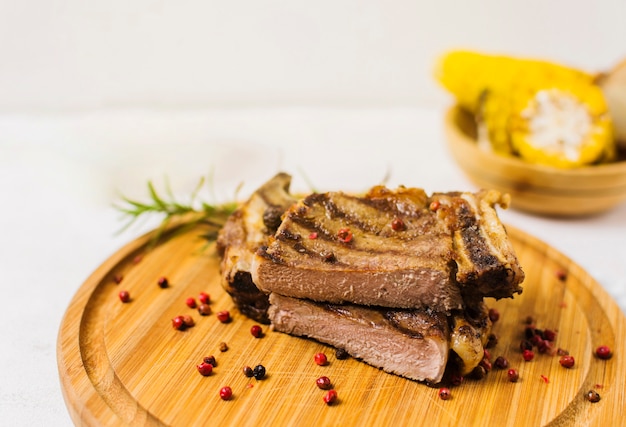
Now that you've got your star ingredient, it's time to give it the TLC it deserves. A little bit of prepping goes a long way, ensuring that your lamb rack is ready to shine.
Seasoning: Unleashing the Flavour
Lamb, with its naturally rich flavour, loves to be dressed up. You can go simple, with a classic salt and pepper combo, or get creative with a symphony of herbs and spices.
Some of my favourite seasoning combinations for lamb rack include:
- Rosemary, garlic, and lemon zest: This combination is a classic for a reason. The rosemary adds a bright, herbaceous flavour, the garlic adds a pungent kick, and the lemon zest brings a touch of freshness.
- Thyme, oregano, and a touch of red pepper flakes: This mix creates a warm, earthy flavour profile with a hint of heat.
- Smoked paprika, cumin, and coriander: For a more exotic flavour, this blend adds smoky depth and a touch of spice.
These are just a few ideas to get your creative juices flowing. Feel free to experiment, mix and match, and find your own personal signature seasoning blend. The possibilities are endless!
Marinating: Infusing Depth (Optional)
Marinating is a wonderful way to infuse the lamb rack with even more flavour, creating a symphony of tastes that will tantalize your taste buds. My go-to marinade is a simple blend of olive oil, lemon juice, garlic, herbs, and spices.
This combination not only adds flavour but also helps keep the meat incredibly moist and tender during cooking. The acid in the lemon juice helps to tenderize the meat, while the oil creates a protective barrier, preventing it from drying out.
The key here is to not overdo it. A 30-minute marinade is usually enough to impart flavour without overpowering the lamb's natural taste. For stronger marinades, an hour or two will do the trick.
Roasting vs. Pan-Searing: A Choice of Techniques
Now, comes the exciting part – choosing your cooking method. You have two main options: roasting or pan-searing. Each method offers its own unique benefits and results in a delicious lamb rack.
Roasting, the traditional approach, is known for its slow and even cooking, resulting in a tender, juicy, and perfectly cooked lamb rack. It's a bit more hands-off, allowing you to focus on other tasks while the magic happens in the oven.
Pan-searing, on the other hand, is a quicker method that gives you that gorgeous, crispy crust that adds an extra dimension of flavour. It's a great option for a weeknight dinner when time is of the essence.
My personal preference? I usually gravitate towards roasting, but there's a time and place for both methods. Ultimately, the choice is yours, and you can't go wrong with either.
(Part 3) Roasting to Perfection: The Art of slow cooking
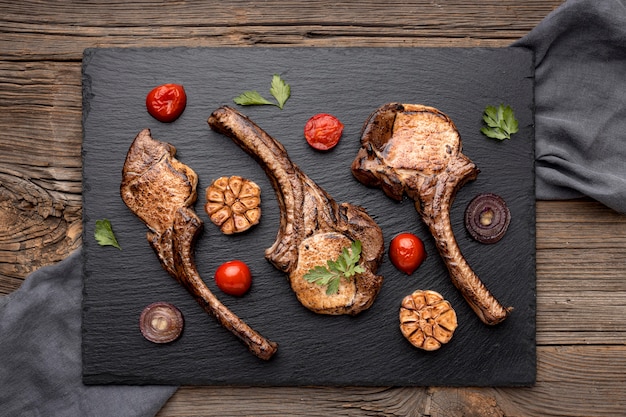
If you're seeking that classic, melt-in-your-mouth tenderness, roasting is the way to go. It's a method that allows the lamb to cook slowly and evenly, resulting in a truly exceptional dish.
Preheat the Oven: Getting Ready for the Heat
Start by preheating your oven to 400°F (200°C). The high heat will give the lamb rack a beautiful sear, locking in moisture and flavour.
Roast the Rack: A Journey of Flavour
Place your seasoned lamb rack in a roasting pan, ensuring it's spread out evenly. Roast for 15 minutes, allowing that initial sear to develop. Then, reduce the oven temperature to 325°F (160°C) and roast for another 15-20 minutes per pound.
Remember, every oven is different, so it's crucial to keep a close eye on your lamb rack and adjust the cooking time as needed.
Temperature Matters: Doneness Done Right
To ensure perfect doneness, a meat thermometer is your best friend. For a juicy medium-rare, aim for an internal temperature of 135°F (57°C). For a more well-done piece, go for 145°F (63°C).
Don't be afraid to pull the lamb rack out a few degrees earlier than your target temperature. It will continue to cook slightly as it rests, ensuring you don't overcook it.
Resting Time: A Moment for Juices to Redistribute
Once the lamb rack is cooked to your liking, remove it from the oven and let it rest for at least 10 minutes before slicing. This allows the juices to redistribute throughout the meat, resulting in a more tender and flavorful dish.
While the lamb rack is resting, you can prepare your side dishes and assemble the rest of your culinary masterpiece.
(Part 4) Pan-Searing to Juicy Goodness: A Quick and Delicious Option
For those who prefer a quicker approach or crave that delicious, crispy crust, pan-searing is a great alternative. It's a technique that delivers amazing flavour and texture in a fraction of the time.
Heat a Pan: A Foundation for Deliciousness
Heat a heavy-bottomed pan over medium-high heat. You want the pan to be screaming hot before you add the lamb rack. A cast-iron skillet is ideal for this method, as it retains heat exceptionally well, ensuring an even sear.
Sear the Rack: Building Flavour with a Sizzling Sound
Place your seasoned lamb rack in the piping hot pan and sear for about 3-4 minutes per side, or until it develops a beautiful golden-brown crust. You'll hear a satisfying sizzle as the lamb releases its juices and starts to brown.
Don't overcrowd the pan, or you'll risk lowering the temperature and creating a stew instead of a sear. Cook in batches if necessary.
Finish in the Oven: Achieving Doneness
Once the lamb rack is beautifully seared on all sides, transfer it to a preheated oven at 350°F (175°C). Bake for another 10-15 minutes, or until cooked to your liking.
Rest and Slice: Letting the Juices Redistribute
Like with roasting, allow the lamb rack to rest for at least 10 minutes before slicing. This will give the juices a chance to redistribute, ensuring a juicy and flavorful bite.
(Part 5) Mastering the Art of the Sauce: Elevating the Experience
No lamb rack is complete without a delicious sauce to enhance its flavour and create a symphony of tastes. A good sauce adds depth, richness, and complexity, taking your dish from good to extraordinary.
Pan Sauce: Simple Yet Spectacular
If you've pan-seared your lamb rack, you've already got a head start on a fantastic pan sauce. After removing the lamb from the pan, pour off any excess fat. Add some wine, broth, or even just water to the pan, scraping up any browned bits.
Bring the mixture to a boil and simmer until the sauce reduces and thickens, creating a lusciously flavorful base. You can add a splash of lemon juice or a knob of butter for extra richness.
Red Wine Sauce: A Classic for a Reason
A classic red wine sauce is a timeless pairing for lamb rack. It adds a rich, complex flavour that complements the lamb's inherent richness.
Simply combine red wine, shallots, garlic, and herbs in a pan and simmer until the sauce thickens. The wine will reduce, concentrating its flavour and creating a velvety sauce. You can add a tablespoon of butter at the end for a richer texture.
Mint Sauce: A Refreshing Counterpoint
For a refreshing twist, try a classic mint sauce. It's a bright and light accompaniment that balances the richness of the lamb.
Combine chopped mint, lemon juice, sugar, and water in a bowl and whisk until combined. The tangy lemon juice, sweetness of the sugar, and freshness of the mint create a delightful contrast to the lamb.
(Part 6) Side Dishes that Sing: Harmonizing Flavours
A well-executed lamb rack deserves equally stellar side dishes to create a symphony of flavour and texture. Here are a few of my favourite pairings that will elevate your lamb rack feast to new heights:
Roasted Vegetables: A Rustic and Earthy Companion
Roasted vegetables, like carrots, potatoes, asparagus, or Brussels sprouts, are a classic pairing for lamb. They bring a rustic, earthy flavour that complements the lamb's richness, while their slightly charred edges add a delightful textural contrast.
Roast them with herbs, spices, and a little olive oil to create a vibrant and flavorful side dish that complements the lamb perfectly.
Risotto: A Creamy and Luxurious Accent
Creamy risotto, especially with parmesan cheese and a touch of lemon, is a luxurious and comforting side that adds a touch of elegance to your lamb rack meal. The creamy texture and earthy flavour of the risotto contrast beautifully with the richness of the lamb.
Green Salad: A Fresh and Vibrant Contrast
A simple green salad with a light vinaigrette adds a fresh and vibrant touch, balancing the richness of the lamb and its sides. It's a light and refreshing element that cleanses the palate, preparing you for another delicious bite.
(Part 7) Presentation: The Finishing Touches
Now that your lamb rack is cooked to perfection, it's time to present it with the same care and attention to detail you've given to every stage of the process.
I love to use a simple white plate, letting the lamb take center stage. A few sprigs of fresh herbs scattered around the plate, or a drizzle of olive oil, adds a touch of elegance and visual appeal.
Consider plating the lamb with a selection of your chosen side dishes, creating a visually appealing and satisfying spread that tantalizes the eyes as much as the palate.
(Part 8) A Word about Wine Pairings: Enhancing the Experience
No lamb rack feast is complete without a good bottle of wine to complement the rich flavours and create a harmonious culinary experience.
I find that a full-bodied red wine, like Cabernet Sauvignon or Merlot, is a perfect pairing for the richness of lamb. The tannins in these wines cut through the fat, providing a refreshing contrast and enhancing the lamb's flavour.
But if you prefer something lighter, a Sauvignon Blanc or Pinot Grigio can also work well, offering a crisp and refreshing counterpoint to the richness of the lamb.
(Part 9) FAQs: Answering Your Burning Questions
Q: What's the best way to cook lamb rack without overcooking it?
A: A meat thermometer is your best friend when cooking lamb. For a juicy medium-rare, aim for an internal temperature of 135°F (57°C), and for a more well-done piece, go for 145°F (63°C). Don't be afraid to pull the lamb out a few degrees earlier than your target temperature. It will continue to cook slightly as it rests, ensuring you don't overcook it.
Q: How do I prevent lamb rack from drying out?
A: Don't overcook it! A meat thermometer will help you achieve the perfect level of doneness. Roasting at a lower temperature can also help prevent drying out. Marinating the lamb before cooking is another great way to keep it juicy.
Q: What are some good alternatives to red wine sauce?
A: If you're not a fan of red wine sauce, you can try other flavourful options like a lemon-herb sauce, a garlic-butter sauce, or a simple pan sauce made with broth and herbs.
Q: Can I freeze lamb rack?
A: Yes, you can freeze lamb rack for up to 3 months. It's best to wrap it tightly in plastic wrap and aluminum foil to prevent freezer burn. Thaw it in the refrigerator overnight before cooking.
Q: How long does it take to cook a lamb rack?
A: The cooking time for a lamb rack depends on the size and method of cooking. A 1-pound rack will typically take about 30 minutes to cook in a 325°F (160°C) oven.
Now, you're equipped with the knowledge and techniques to transform a simple lamb rack into a culinary masterpiece. So go forth, embrace the challenge, and create a dish that will be the talk of the town. Enjoy the journey and the delicious outcome!
Everyone is watching
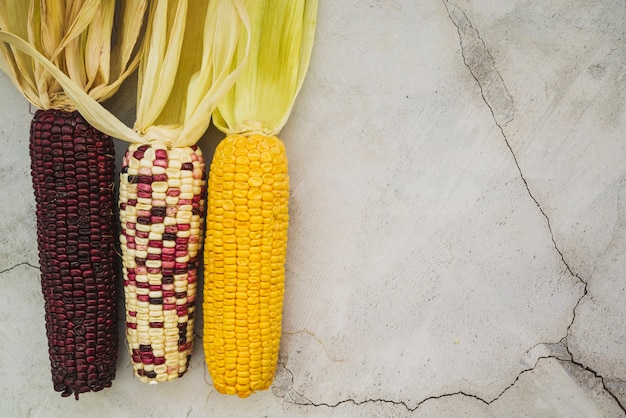
Corn on the Cob: The Ultimate Guide to Perfectly Cooked Ears
Healthy MealsAh, corn on the cob. Just the name evokes images of sunny days, barbecues, and that sweet, juicy flavour that ...
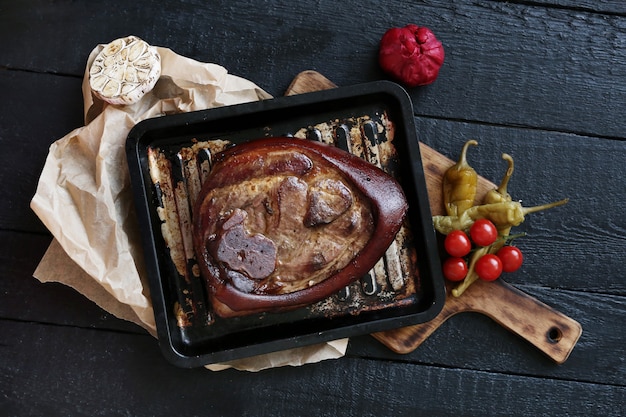
Perfect Pork Roast Oven Cooking Time: A Guide to Delicious Results
Healthy MealsThere's something truly satisfying about a perfectly roasted pork. The aroma alone is enough to make your mout...
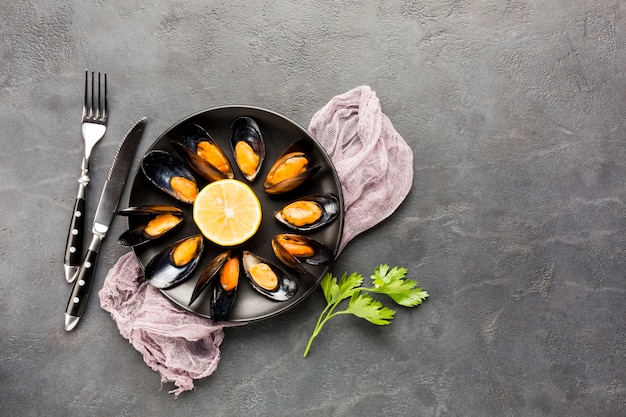
Scallops: The Ultimate Guide to Perfect Cooking
Healthy MealsAh, scallops. Those delicate, sweet, and utterly delicious morsels of the sea. They hold a special place in my...
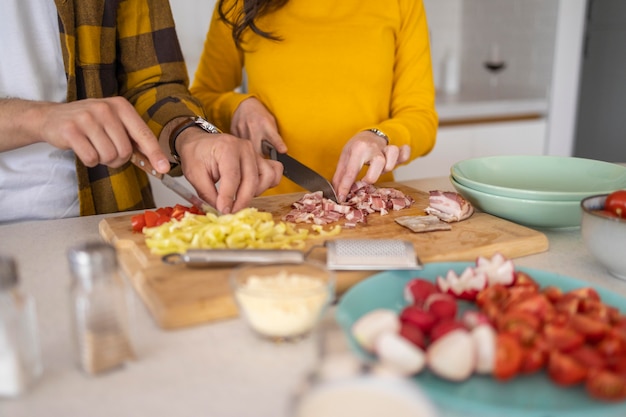
Ham Cooking Time: How Long to Bake, Smoke, or Boil a Delicious Ham
Healthy MealsAh, ham. It's a classic, isn't it? A real crowd-pleaser, especially around holidays. And when done right, it'...
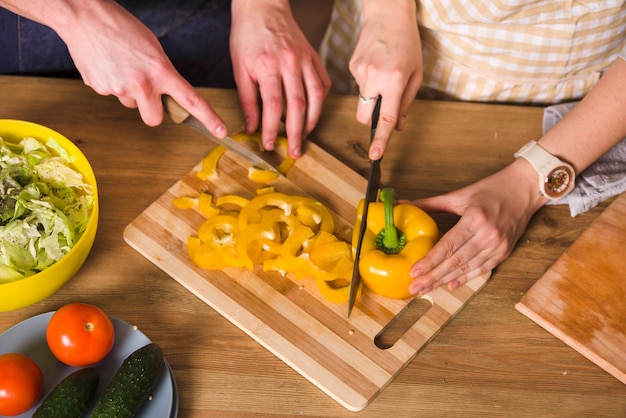
Spaghetti Squash: The Ultimate Guide to Cooking and Serving
Healthy MealsRemember that time you saw spaghetti squash at the supermarket, looking all bumpy and strange, and thought, "W...
